-
About
- About Listly
- Community & Support
- Howto
- Chrome Extension
- Bookmarklet
- WordPress Plugin
- Listly Premium
- Privacy
- Terms
- DMCA Copyright
- © 2010-2025 Boomy Labs


 Soubin Nath
Soubin Nath
Listly by Soubin Nath
Here is the list of 25 most mesmerizing destinations in Australia and Pacific Regions which you have to visit before you die.
Source: https://www.lonelyplanet.com/
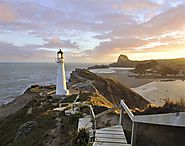
The intense popularity of Byron Bay can be, at first, a mystery. Sure, the beaches are sublime, but there are spectacular beaches all along this coast. Its locals have come to symbolise an Australian haute-boho lifestyle, yet much of the town is a squat, architectural mishmash and has a traffic problem. So why the legions of global fans? As they say in Byron, it's the vibe.
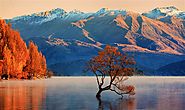
As the planet heats up environmentally and politically, it’s good to know that New Zealand exists. This uncrowded, green, peaceful and accepting country is the ultimate escape.

Set your internal clock to ‘Fiji time’: exploring the archipelago’s exquisite beaches, undersea marvels, lush interiors and fascinating culture shouldn’t be rushed.

Kiss the tourist hype goodbye – and say a warm Malo e lelei (hello!) to the Kingdom of Tonga. Resolutely sidestepping flashy resorts and packaged cruise-ship schtick, Tonga is unpolished, gritty and unfailingly authentic. Life here ticks along at its own informal pace: church-life is all pervasive, chickens and pigs have right-of-way, and there's nothing that can't wait until tomorrow.

Each year, more than 1.5 million visitors come to experience this World Heritage–listed area that stretches across 2000km of coastline. Diving and snorkelling are just some of the ways of experiencing this wonderfully rich ecosystem. There's also sailing, scenic flights and a world of DIY options for exploring the reef’s gateway towns and stunning islands

Nothing can really prepare you for the immensity, grandeur, changing colour and stillness of 'the rock'. It really is a sight that will sear itself onto your mind. The World Heritage–listed icon has attained the status of a pilgrimage. Uluru, the equally impressive Kata Tjuta (the Olgas) and the surrounding area are of deep cultural significance to the traditional owners, the Pitjantjatjara and Yankuntjatjara Aboriginal peoples (who refer to themselves as Anangu).
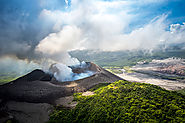
Peering down into the rumbling, exploding lava storm of Mt Yasur is a sight you won't soon forget. The active volcano is so accessible that 4WD vehicles can get to within 150m of the crater rim. There are many tours up to see the old man, and although you can walk up without a guide (around 45 minutes from the entrance), or join a vehicle going up, it's still best to go with a guide.
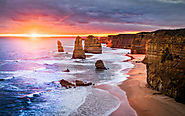
The most iconic sight and enduring image for most visitors to the Great Ocean Road, the Twelve Apostles provide a fitting climax to the journey. Jutting out from the ocean in spectacular fashion, these rocky stacks stand as if they've been abandoned to the ocean by the retreating headland. Today only seven 'apostles' can be seen from a network of viewing platforms connected by timber boardwalks around the clifftops.
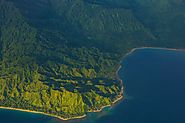
Kiss the tourist hype goodbye – and say a warm Malo e lelei (hello!) to the Kingdom of Tonga. Resolutely sidestepping flashy resorts and packaged cruise-ship schtick, Tonga is unpolished, gritty and unfailingly authentic. Life here ticks along at its own informal pace: church-life is all pervasive, chickens and pigs have right-of-way, and there's nothing that can't wait until tomorrow.
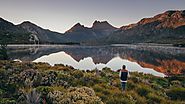
Part of the World Heritage–listed Tasmanian Wilderness, this 1262-sq-km national park incorporates glacier-sculpted mountain peaks, river gorges, lakes, tarns and wild alpine moorlands stretching all the way from the Great Western Tiers in the north to Derwent Bridge in the south. Many of its most beloved landscapes and walks – including parts of the world-renowned 65km Overland Track stretching from Cradle Mountain to Lake St Clair – are in the Cradle Mountain area.
Kakadu is a whole lot more than a national park; it's also a vibrant, living acknowledgement of the link between the Aboriginal custodians and the country they have nurtured and respected for thousands of generations. Encompassing almost 20,000 sq km (about 200km north–south and 100km east–west), it contains a spectacular ecosystem and a mind-blowing concentration of ancient rock art. The landscape is ever-changing − periodically scorched and flooded, apparently desolate or obviously abundant depending on the season.
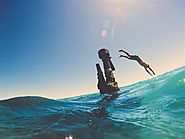
Adrift in the daydreamy South Pacific – deliciously remote and surprisingly diverse – you can de-stress or ramp up the action, with some super-fresh seafood awaiting at day's end.
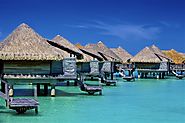
What Tahiti lacks in wide white-sand beaches, it makes up for in waterfall-laden, shadowy mountains, unpretentiously beautiful black-sand beaches, sheltered blue lagoons and a distinctly Polynesian, modern buzz. This is the heart of the islands, where the cultures from all the archipelagos are mixed in the cacophonous, dusty, yet smiling and energetic capital of Pape'ete.
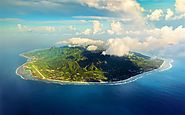
The most populous of the Cook Islands is stunning in its natural beauty and physical drama. A halo of flame-orange coral reef encircles the island, and Rarotonga’s sapphire-blue lagoon is trimmed by sparkling white beaches. Beyond the reef, breakers foam and crash like distant thunder.
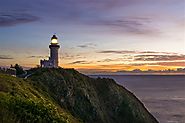
The intense popularity of Byron Bay can be, at first, a mystery. Sure, the beaches are sublime, but there are spectacular beaches all along this coast. Its locals have come to symbolise an Australian haute-boho lifestyle, yet much of the town is a squat, architectural mishmash and has a traffic problem. So why the legions of global fans? As they say in Byron, it's the vibe.
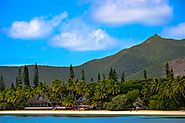
New Caledonia's dazzling lagoon surrounds it with every hue of blue, green and turquoise. The light and the space simply delight your senses. By becoming a World Heritage site, the lagoon has helped bring the people together to celebrate and protect it, from village level through to government.New Caledonia isn’t just a tropical playground.

Sydney sheds its suit and tie, ditches the strappy heels and chills out in the eastern beaches. Beach after golden-sand beach, alternating with sheer sandstone cliffs, are the classic vistas of this beautiful, laid-back and egalitarian stretch of the city
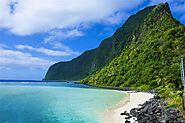
Serene but spirited, wild yet well-manicured, hushed but birthed by volcanic explosions; stunning Samoa is a paradisaical paradox. Despite its intense natural beauty – all iridescent seas, jade jungles and crystal waterfalls – this is a humble place, devoid of mega-resorts and flashy attractions, but with welcomes as warm as the island sun.
This picturesque row of three- and four-storey sandstone warehouses is a classic example of Australian colonial architecture. Dating back to the whaling days of the 1830s, Salamanca was the hub of Hobart’s trade and commerce. By the mid-20th century many of the warehouses had fallen into ruin, before restorations began in the 1970s. These days Salamanca hosts myriad restaurants, cafes, bars and shops, and the unmissable Saturday morning Salamanca Market.
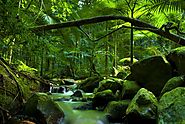
The Daintree represents many things: Unesco World Heritage–listed rainforest, a river, a reef, laid-back villages and the home of its traditional custodians, the Kuku Yalanji people. It encompasses the coastal lowland area between the Daintree and Bloomfield Rivers, where the rainforest tumbles right down to the coast.
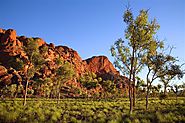
Heading east from Broome, the Great Northern Highway (GNH) crosses the flat, scrubby Roebuck plains before traversing the (sometimes) mighty Fitzroy River at Willare Bridge, just before Derby. Boab-tree-lined Derby makes for a pleasant overnight stop while you decide whether to take on the shorter-in-length-though-longer-in-time legendary Gibb River Road or sample the bitumen delights of the GNH for the next 900-odd kilometres to Kununurra.
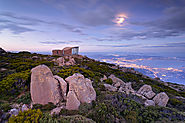
Cloaked in winter snow, kunanyi/ Mt Wellington (1271m) towers over Hobart like a benevolent overlord. The citizens find reassurance in its constant, solid presence, while outdoorsy types find the space to hike and bike on its leafy flanks. And the view from the top is unbelievable! You can drive all the way to the summit on a sealed road; alternatively, the Hobart Shuttle Bus Company runs daily two-hour tours to the summit.
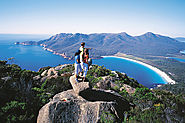
Coles Bay township sits on a sweep of sand at the foot of the dramatic pink-granite peaks of the Hazards on the Freycinet Peninsula. It’s a laid-back holiday town with plenty of accommodation (though book well ahead in summer) and some active tour options. The sublime Freycinet National Park is the reason everyone is here: a wild domain of sugar-white beaches and utterly transparent water.
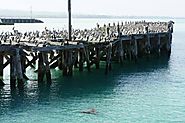
Every evening the little tykes from the Oamaru little-penguin colony surf in and wade ashore, heading to their nests in an old stone quarry near the waterfront. Stands are set up on either side of the waddle route. General admission (adult/child $28/14) will give you a good view of the action but the premium stand ($40/20), accessed by a boardwalk through the nesting area, will get you closer.
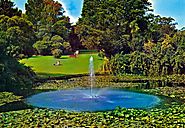
Melbourne's Royal Botanical Gardens are simply glorious. From the air, the 94-acre spread evokes a giant green lung in the middle of the city. Drawing over 1.5 million visitors annually, the gardens are considered one of the finest examples of Victorian-era landscaping in the world. You'll find a global selection of plantings and endemic Australian flora. Mini ecosystems, such as a cacti and succulents area, a herb garden and an indigenous rainforest, are set amid vast lawns.

Born and brought up in Kerala, India. Now in Mumbai, India doing first year of my Masters in Film Studies (M.A)..